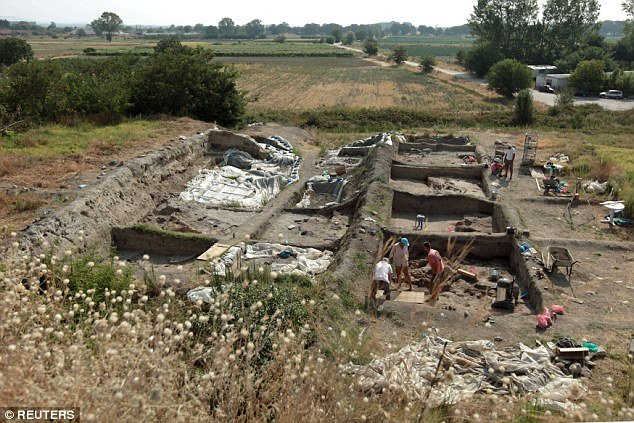In 1976, archaeologists unearthed gold jewellery in the Bulgarian Black sea city of Varna, which they claimed was the world's oldest gold artefact ever found.
But a new gold bead has been discovered, which researchers say is even older.
The tiny bead was found in Pazardzhik in Bulgaria, and is believed to date back to 4,500-4,600 BC.
The bead measures four millimetres (0.16 inches) in diameter and weighs just 15 centigrams (0.005 ounces).
Yavor Boyadzhiev, associated professor at the Bulgarian Academy of Science, said: 'I have no doubt that it is older than the Varna gold.
'It's a really important discovery. It is a tiny piece of gold but big enough to find its place in history.'
The researchers believe the bead was made at a site just outside the modern town of Pazardzhik.
The site was the first 'urban' settlement in Europe, peopled by 'a highly-cultured society' which moved there from Anatolia, in today's Turkey, around 6,000 BC.
Mr Boyadzhiev, said: 'I would say it is a prototype of a modern town, though we can say what we have here is an ancient town.'
The gold bead was dug up two weeks ago in the remains of a small house that would have stood at a time when metals such as copper and gold were being used for a first time.
The settlement unearthed so far is between 100,000-120,000 square metres (25-30 acres) and would have had a 2.8 metre high (9 foot) fortress wall.
According to Mr Boyadzhiev, anything over 700,000 square metres is regarded as a town by researchers working in Mesopotamia.
More than 150 ceramic figures of birds have also been found at the site, indicating the animal was probably worshipped by the town's people.
The settlement was destroyed by hostile tribes who invaded from the north-east around 4,100 BC.
The bead will be exhibited in the historical museum in Pazardzhik once it has been thoroughly analysed and its age confirmed.










